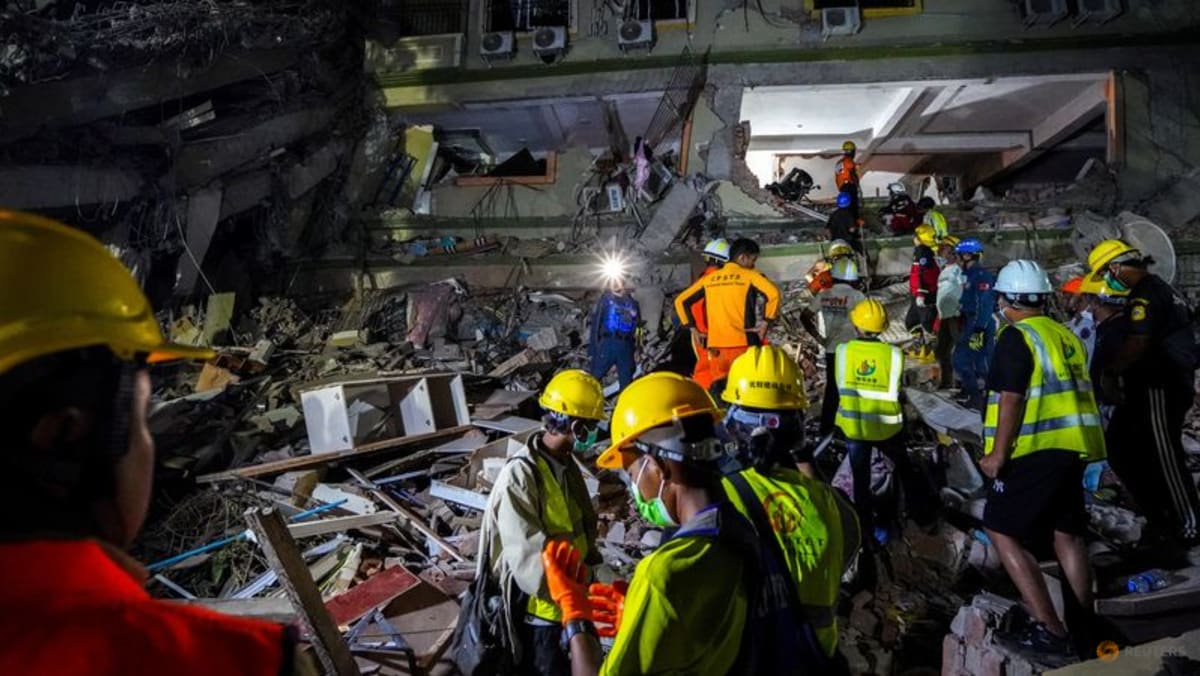Commentary: USAID absence after the deadly Myanmar earthquake speaks volumes

Commentary Commentary By dismantling foreign aid, US President Donald Trump surrendered soft power in Southeast Asia and cleared the path for China, says Bryanna Entwistle of the Asia Society Policy Institute. This audio is generated by an AI tool. NEW YORK: After a deadly earthquake devastated Myanmar on Friday (Mar 28), President Donald Trump promised that the United States would help with response efforts. So far, that hasn’t happened. The gutting of USAID has critically weakened the response teams deployed by the US to provide support after major natural disasters. Meanwhile, China has moved swiftly, sending rescue and medical teams into affected parts of Myanmar and pledging over US$13.8 million in aid. The unfolding international response to the Myanmar earthquake has highlighted how the aid landscape in Southeast Asia has already been altered by the decimation of USAID. By cutting 83 per cent of all contracts and firing nearly the entire foreign aid agency, Mr Trump has given up the strongest tool in America’s soft power arsenal, opening the door for further Chinese influence in Southeast Asia. USAID’s work has long served as a strategic mechanism for America to protect its own interests both abroad and at home. This is especially true in Southeast Asia, where the Vietnam War and the US’ secret bombings of Laos and Cambodia in the 1960s and 1970s remain fresh in the collective memory. USAID-funded remediation efforts played a critical role in turning the page for US-Vietnam diplomacy, but now the termination of programmes dedicated to cleaning up Agent Orange threatens the very foundation of the relationship. Even before the USAID shutdown, a study from the ISEAS-Yusof Ishak Institute indicated that many Southeast Asians had increasing reservations about US leadership and engagement in the region. By sending more than US$1.5 billion in development assistance over the past decade, the US contributes more humanitarian aid to Southeast Asia than any other country. The majority of this aid has gone to Myanmar and neighbouring Thailand, where hundreds of thousands refugees have sought shelter from Myanmar’s ongoing civil war. Unless there is a sharp reversal in policy, it is estimated that US$259 million in humanitarian aid to Myanmar will be axed in 2025 alone. Before the earthquake, USAID’s withdrawal was set to devastate healthcare systems, governance programmes, and human rights organisations across Myanmar. Now those affected by these cuts are also facing the momentous task of rebuilding their country amid a civil war. As the Chinese publicly step up to the plate, the absence of American leadership in this time of crisis will be noticed far beyond Myanmar’s borders and have a lasting impact on how Southeast Asians view the US. China’s rapid response to the Myanmar earthquake opens up the question of whether it plans to exploit the sudden feeling of abandonment by increasing overseas humanitarian assistance. Just days after the US suspended funding for de-mining efforts in Cambodia, China announced that it would provide a grant of US$4.4 million to organisations clearing explosive ordnance from the 1970s. It also announced a joint project with UNICEF and Cambodia to improve education and health for children, a week after the US cancelled similar programmes. But, beyond selectively backfilling high-profile projects in countries of strategic importance, we shouldn’t expect China to replace American aid in a meaningful way. As part of its Belt and Road Initiative, China primarily focuses on financing infrastructure projects rather than capacity building and humanitarian assistance. China also doesn’t fund programmes that support human rights and democracy, so the disappearance of such programmes will leave advocates in some countries vulnerable at a time of democratic backsliding. Expecting multilateral organisations and large foundations to fill funding gaps left by USAID is similarly fraught. The Trump administration’s cuts to foreign aid contracts have severely impacted the ability of disaster-response teams run by the United Nations and organisations like International Rescue Committee to provide vital food, medicine and supplies to impacted parts of Myanmar. Meanwhile, US allies in the Indo-Pacific are feeling pressure to fill the gaps the US has left behind. South Korea has already pledged US$2 million in humanitarian aid via international organisations supporting earthquake rescue efforts, and the Japanese Ministry of Foreign Affairs has promised to provide all possible support. Today, Japan and South Korea provide 13 per cent and 9 per cent of the annual aid directed to Southeast Asia, respectively. But, like the US, Japan and South Korea are dealing with their own economic woes and turmoil at home, and they are not in the position to backfill the millions provided by USAID to the region each year. In Japan, public support for expanding economic development assistance has fallen to the weakest level in the past decade. While China won’t step in to replace America’s aid profile, its swift response to the Myanmar earthquake provides us with a glance into a future where it plays an expanded role in Southeast Asia’s development landscape on its own terms. The Trump administration promised an “America First” approach to foreign policy, but by gutting USAID, it has significantly weakened American soft power and opened the door for expanded Chinese influence and leverage in Southeast Asia. Bryanna Entwistle is a Press and Program Officer at Asia Society Policy Institute in New York. Subscribe to our Chief Editor’s Week in Review Our chief editor shares analysis and picks of the week's biggest news every Saturday. Get our pick of top stories and thought-provoking articles in your inbox Stay updated with notifications for breaking news and our best stories Get WhatsApp alerts Join our channel for the top reads for the day on your preferred chat app Copyright© Mediacorp 2025. Mediacorp Pte Ltd. All rights reserved. We know it's a hassle to switch browsers but we want your experience with CNA to be fast, secure and the best it can possibly be. To continue, upgrade to a supported browser or, for the finest experience, download the mobile app. Upgraded but still having issues? Contact us


















